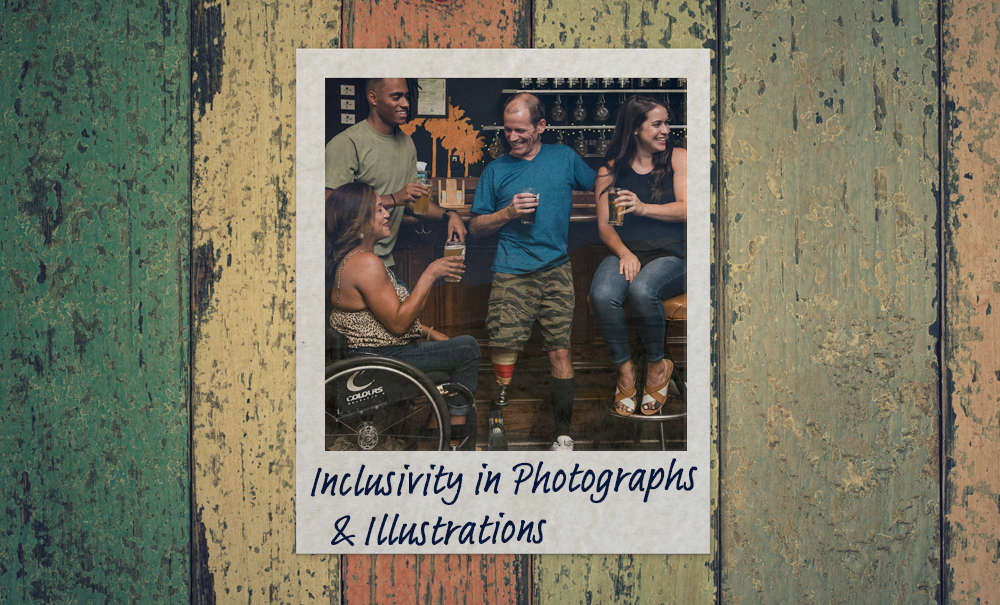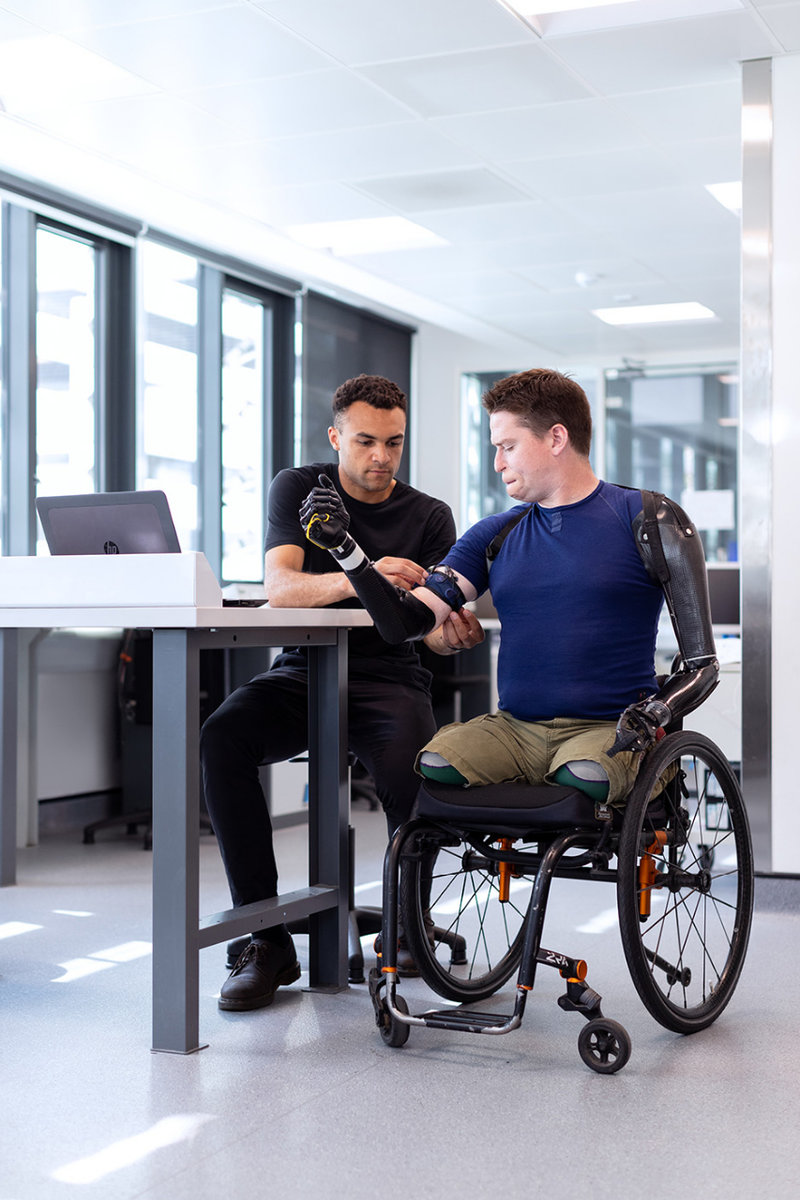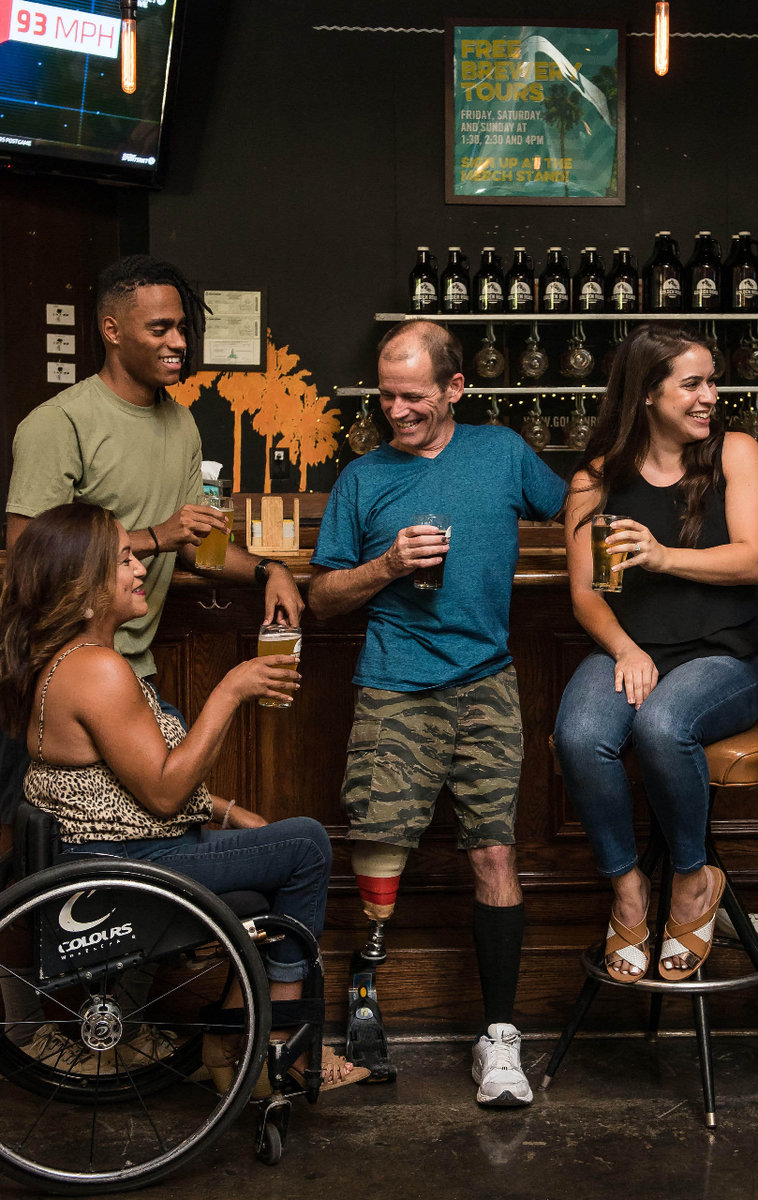Best Practices in Accessibility: Inclusion in Photographs/Illustrations


Using realistic and positive images representing people with disabilities is a great step towards being inclusive and accessible in your marketing materials. However, the truth is, there are better ways than others to portray disabled people. Well-intended images of people with disabilities in photographs or illustrations can sometimes give off the wrong message. Some image choices can actually be quite offensive.
Thankfully, there are some well-recognized best practices to guide you. By following these suggestions, you can be sure that you will be representative and inclusive in your marketing efforts.
Prioritize Positive, Empowering Imagery
Try not to depict people with disabilities as poor, needy, or helpless. We’re looking for equality over pity. A great way to achieve this goal is to avoid images highlighting a person’s struggles. Often, portrayals of people with disabilities show the person being “helped” in some way. Instead, feature people with disabilities as confident and capable. Ask yourself if the disabled person is equal to the other individuals in the picture. Avoid using images that present non-disabled people as overprotective of people with disabilities. Patronizing images are pretty cringe-worthy for us. We would really like you to provide an empowering portrait of people with disabilities on equal ground with others. Here is an example of what we mean and what to not do:

Show Diversity
People have many different disabilities. Don’t be afraid to show them! If you wish to have multiple disability-related images, use people with varying disabilities. It’s kind of cool when a viewer at first doesn’t see a limb difference or a hearing aid. Everyone sees the person using the wheelchair or with a guide dog. There’s no single image that will represent disability, so don’t try. Aim for pictures that show varying ability levels. We are a diverse bunch, and you can’t paint us all with the same brush. And don’t forget, we come from a wide variety of gender identities, skin colours, and cultures. Make sure that you are portraying real diversity.
Here is a good example of a diverse group. This image shows different genders, skin colours, and ability levels alongside one another. Everyone is equal.

Let People With Disabilities Represent Themselves
Please use photographs that feature models who actually have disabilities. We can tell when someone is acting to be like us. Most people who have disabilities do not want to see models without disabilities take our roles.
Many stock photo sites list the models in each photograph, and you can see the model’s other photos on the site. This information gives you the chance to verify whether or not the model genuinely has a disability. Trust us. People will notice if you ensure that your images are genuine. People will appreciate your effort. Oh, and you could also hire a photographer with a disability for your shots! We can provide a unique perspective, so to speak. Accessibrand can help with that.
Inclusion is a Sign of Respect
Inclusion is more than just an obligation. It’s more than something to be done to signal goodwill. Inclusion is a sign of respect that is crucial to shaping public perception of people with disabilities. It is worth putting in the effort to get it right. A poorly planned attempt at inclusion can backfire and send the wrong message to the very people you want to attract. Therefore, use these best practices when looking for images of people with disabilities in your marketing materials.
Accessibrand is happy to assist you in choosing and creating appropriate and representative images. Feel free to reach out. You will be glad you did!
Original Photo background by: Brett Sayles, Photo One: This is Engineering, Photo Two: Elevate.
| TAGS |
